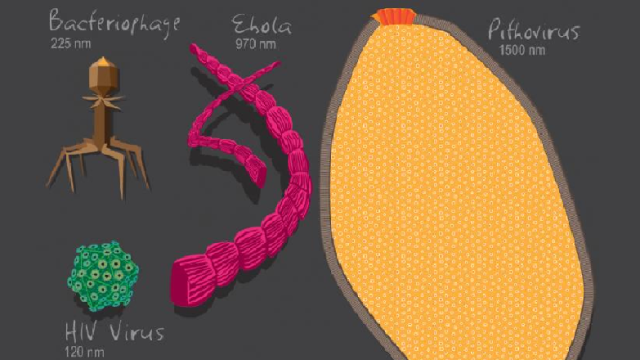Viruses are living things after all, and they share an early evolutionary history with the cells that make up the bacteria, fungi, plants, and animals we know today. That’s according to new research on the evolutionary history of viruses and cells, published in the journal Science Advances.
To learn more about how viruses might be related to cells, evolutionary biologists Gustavo Caetano-Anollés and Arshan Nasir compared the protein folds of 3,460 viruses with those of 1,620 cells. Folds are the basic structures that give proteins their complex shapes, and the genetic codes of all cells and viruses carry instructions for different protein folds.
Comparing them is a good way to study evolutionary history, especially in viruses. Most viruses mutate often, so their genetic codes change quickly, which can cover up the oldest genetic traces. But protein folds keep their shapes even if their genetic codes change, which makes them a good record of viruses’ and cells’ ancient evolutionary history.
The viruses that Caetano-Anollés and Nasir analysed turned out to share 442 protein folds with the cells in the study. The biologists also found 66 protein folds that were apparently unique to viruses. That’s basically what biologists expect to find when they compare two related organisms: a large number of similarities, with a few differences to set the two organisms apart. According to Caetano-Anollés and Nasir, those findings point to shared origins for viruses and cells.
Viruses Are Alive
It’s more evidence to support the argument that viruses are living organisms, rather than just rogue packets of genetic material. Many scientists say that viruses don’t count as living things because they can’t reproduce on their own and they have no metabolism, a chemical process that produces the energy required for life. But Caetano-Anollés and Nasir, like many other biologists, contend that viruses just reproduce differently than other living things, but should still count.
“Viruses should be considered ‘living’ organisms that simply survive by means of an atypical reproduction method that requires infecting a cell,” they wrote in their recent paper. It’s not that different from the life cycle of some parasitic bacteria species, after all.
According to Caetano-Anollés and Nasir, in order to determine whether viruses can reproduce and have metabolism, it’s important to look at the “virus factory” inside an infected cell, rather than what we usually think of as the body of a virus: particles called virions, which exist outside cells and don’t reproduce. “The true ‘self’ of a virus is the intracellular virus factory of infected cells,” they wrote — not the virion.
An infected cell reproduces by producing new virions, which infect other cells to make new “virus factories,”and Caetano-Anollés and Nasir say that process is analogous to how more conventional organisms produce gametes (sex cells) to fertilize other cells and reproduce. Infected cells also produce proteins, which go into the production of new virions.
From Early Cells to Modern Viruses
Caetano-Anollés and Nasir say the most likely explanation for their findings is that modern viruses and cells share a common ancestor. They call this ancient organism a proto-virocell, and it would have been a much more primitive version of the “virus factory” that’s inside an infected cell. Proto-virocells arose so early in the history of life that cells looked very different than they do today: their genomes would have been stored on segments of RNA, and they would have lacked some of the complex structures of today’s cells.
Over time, say Caetano-Anollés and Nasir, selective pressure caused the proto-virocells to evolve with smaller genomes and smaller cell sizes. Eventually, that process of evolution led to today’s viruses, which are much smaller than modern cells and have much simpler genomes.
Top Image: JULIE MCMAHON
